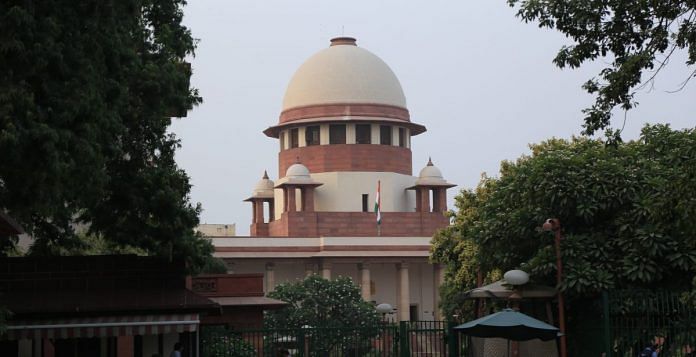The addition of these four judges will take the strength of the Supreme Court to 28 judges, against a sanctioned total of 31.
New Delhi: A high court judge who praised Prime Minister Narendra Modi as a “hero” is among four chief justices elevated to the Supreme Court late Thursday night.
The appointment of Chief Justice Hemant Gupta (Madhya Pradesh), R. Subhash Reddy (Gujarat), M.R. Shah (Patna) and Ajay Rastogi (Tripura) as Supreme Court judges was cleared a day after the top court’s collegium, led by Chief Justice of India Ranjan Gogoi, recommended their names to the law ministry.
The four judges were sworn in Friday morning.
The addition of these four judges will take the strength of the Supreme Court to 28 judges, against a sanctioned total of 31.
It comes just as two judges of the Supreme Court — Justice Kurian Joseph and Justice Madan B. Lokur — approach retirement in November and December respectively. Justice A.K. Sikri will retire next March.
This is the first recommendation for judicial appointments to the Supreme Court under Ranjan Gogoi, who took office as CJI last month.
Headed by the Chief Justice of India, the Supreme Court collegium also comprises the next four most senior judges. The current collegium comprises CJI Gogoi, Justice Madan B. Lokur, Justice Kurian Joseph, Justice A.K. Sikri and Justice S.A. Bobde
Also read: Hours after SC rap on high court judge appointments, Modi govt clears names
Controversies aplenty
Two of the new appointees — Justice Shah and Justice Gupta — have courted controversies.
Shah, who was appointed a judge of the Gujarat High Court in 2004, drew criticism in August this year for hailing Prime Minister Narendra Modi as a “model and hero”.
Shah’s abortive transfer from the high court of Gujarat to that of Madhya Pradesh was also mired in controversy. In 2016, the collegium, then led by Chief Justice of India T.S. Thakur, had recommended transferring Shah to the Madhya Pradesh High Court but the Modi government sat on the file without formally rejecting it.
Yatin Oza, a Gujarat-based senior advocate, subsequently wrote to Justice Thakur, alleging that Justice Shah was not being transferred on account of his alleged proximity to Modi and BJP president Amit Shah.
When Justice Thakur retired and his successor Justice J.S. Khehar took over, the government returned the file.
Justice Shah continued to serve in Gujarat as the second most senior judge till he was appointed the chief justice of the Patna High Court in August this year.
Justice Gupta, meanwhile, was under the lens in an Enforcement Directorate probe into money laundering allegations against his wife Alka Gupta.
Smooth sailing
This exercise of judicial appointments had none of the turbulence that marked an earlier round at the start of this year.
The Modi government had attempted to stall the elevation of Justice K.M. Joseph, arguing that the collegium had overlooked the “seniority criteria” while elevating him. Justice K.M. Joseph’s appointment came through after an eight-month bitter turf war between the executive and the judiciary.
While reiterating his name, the collegium had argued that all factors such as seniority, merit, regional representation will be considered while making recommendations.
Also read: Chief Justice who called Modi ‘model and hero’ among 4 recommended for elevation to SC
According to a resolution dated 24 October, the Supreme Court collegium recommended that appointments be made on the basis of seniority. The seniority of the judges is gauged by the date a judge is promoted as the chief justice of a high court.






